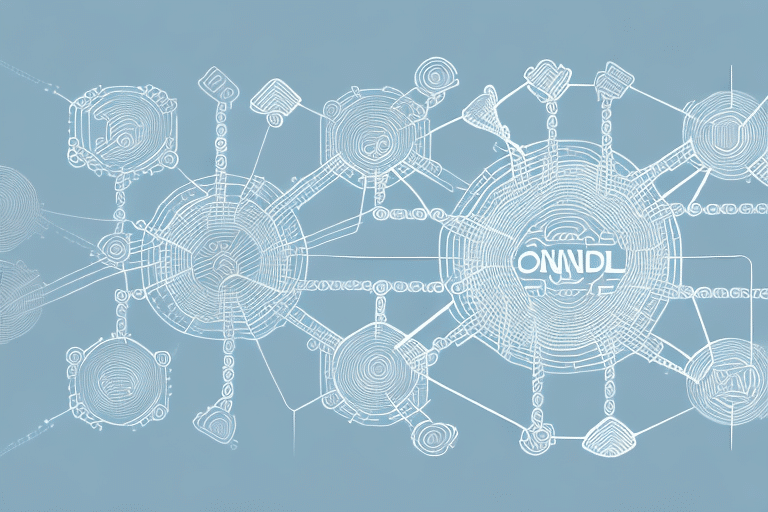Understanding Omni-Channel Marketing
Omni-channel marketing is a comprehensive strategy that ensures a seamless and consistent customer experience across all channels and touchpoints, both online and offline. This approach allows customers to engage with a brand through various platforms—such as websites, mobile apps, social media, and physical stores—without any disruption or inconsistency in their journey.
For example, a customer might browse products on a website, add items to their cart via a mobile app, and complete the purchase in-store. This fluid transition between channels enhances the overall shopping experience, making it more convenient and tailored to individual preferences.
To effectively implement an omni-channel strategy, businesses need a connected infrastructure that aggregates customer data from all interaction points. This data is then used to personalize the customer experience, ensuring that every touchpoint reflects the customer's behaviors and preferences.
The Benefits of an Omni-Channel Approach
Increased Customer Loyalty and Engagement
Adopting an omni-channel strategy significantly boosts customer loyalty and engagement. According to a Forrester report, companies with strong omni-channel customer engagement strategies retain on average 89% of their customers, compared to 33% for those with weak strategies.
Higher Revenue and Market Share
Businesses that leverage omni-channel strategies see higher revenue growth. A study by Digital Commerce 360 found that omni-channel retailers achieve a 30% higher profit margin compared to single-channel counterparts.
Enhanced Brand Awareness
Consistent messaging across multiple channels strengthens brand recognition and trust. This uniformity ensures that customers receive the same quality of service and information, regardless of how they interact with the brand.
Key Elements of a Successful Omni-Channel Strategy
Connected Infrastructure
A robust infrastructure that integrates all customer touchpoints is essential. This includes CRM systems, data management platforms, and marketing automation tools that work in harmony to provide a unified view of the customer.
Personalization
Utilizing customer data to tailor experiences and offers is crucial. Personalization can range from customized product recommendations to targeted marketing campaigns based on individual behaviors and preferences.
Consistency Across Channels
Maintaining a consistent brand message and experience across all channels helps in building trust and reliability. This includes uniform branding, synchronized promotions, and cohesive customer service standards.
Data Analytics
Leveraging analytics tools to gain insights into customer behavior and preferences enables businesses to make informed decisions. Data-driven strategies enhance the effectiveness of marketing efforts and optimize overall performance.
Implementing an Omni-Channel Strategy: Challenges and Solutions
Integrating Diverse Systems
One of the primary challenges is integrating various systems and platforms to create a seamless customer experience. Investing in scalable and interoperable technologies can mitigate this issue.
Maintaining Consistency
Ensuring consistency across all channels requires diligent coordination and continuous monitoring. Establishing standardized processes and regular audits can help maintain uniformity.
Data Management
Handling vast amounts of customer data while ensuring privacy and security is critical. Implementing robust data management practices and compliance with regulations like GDPR can address these concerns.
Adapting to Changing Customer Preferences
Customer preferences evolve rapidly, and businesses must remain agile to adapt accordingly. Regularly updating strategies based on customer feedback and market trends is essential for sustained success.
Measuring Success in Your Omni-Channel Strategy
Customer Lifetime Value (CLV)
CLV measures the total revenue a business can expect from a single customer account. A higher CLV indicates effective customer retention and satisfaction.
Customer Acquisition Cost (CAC)
CAC assesses the cost associated with acquiring a new customer. Lowering CAC while maintaining or increasing CLV is a sign of a successful strategy.
Retail Conversion Rate
This metric tracks the percentage of visitors who make a purchase. An increasing conversion rate suggests that the omni-channel approach is effectively influencing buying decisions.
Customer Satisfaction (CSAT)
CSAT surveys measure how satisfied customers are with their experiences. High satisfaction scores correlate with increased loyalty and positive word-of-mouth referrals.
Future Trends in Omni-Channel Marketing
Artificial Intelligence and Machine Learning
AI and machine learning are revolutionizing personalization by enabling more accurate predictions and tailored recommendations. These technologies enhance customer interactions by making them more relevant and timely.
Voice Commerce
With the rise of voice-activated devices like Amazon Alexa and Google Assistant, voice commerce is becoming a significant channel. Businesses are optimizing their platforms to accommodate voice search and purchases.
Augmented and Virtual Reality
AR and VR technologies are creating immersive shopping experiences, allowing customers to visualize products in real-world settings before making a purchase.
Sustainable Practices
Consumers are increasingly valuing sustainability. Omni-channel strategies are incorporating eco-friendly practices, such as sustainable packaging and transparent supply chains, to meet these expectations.
Conclusion
Omni-channel marketing is no longer a luxury but a necessity in today's competitive landscape. By providing a seamless, consistent, and personalized experience across all channels, businesses can foster stronger customer relationships, enhance loyalty, and drive revenue growth. Implementing an effective omni-channel strategy requires strategic planning, investment in the right technologies, and a commitment to adaptability. As consumer behaviors continue to evolve, staying ahead with a robust omni-channel approach will be crucial for sustained success.




















